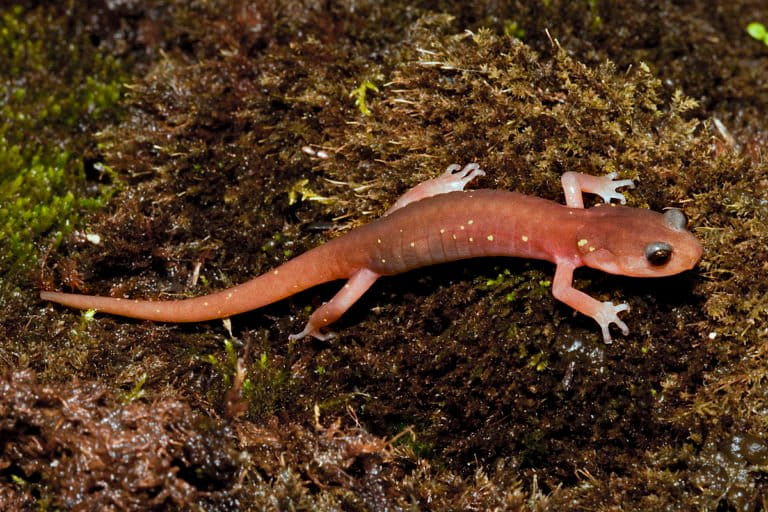- Another pandemic is currently on the march, and it’s got salamanders in its sights.
- The United States is home to the world’s greatest diversity of salamanders: we speak with Senior Editor Morgan Erickson-Davis about why this is, and therefore what we stand to lose.
- The disease ‘Bsal’ nearly wiped out a population of salamanders in Europe, and scientists worry it could make landfall in the U.S. via the pet trade.
- Listen here to episode two of our special edition podcast series exploring this topic.
Mongabay senior editor Morgan Erickson-Davis joins this special edition of our podcast to provide the interesting context for the 2018/2019 special series she produced on the potential ‘Bsal’ salamander pandemic in the United States. With host Mike DiGirolamo she dives into the truly unique salamander biodiversity of the United States: what makes it home to such a plethora of species not seen anywhere else, why it matters to forest ecosystems, and most importantly, what the country stands to lose if Bsal reaches its shores.
Listen here:
For the next couple months, Mongabay Explores will dive into this recent project our writers and editors produced on Bsal, to learn what’s known about this issue now. The show is hosted by Mike DiGirolamo, who is a journalist, marathoner, and actor living in Tennessee, right near the epicenter of salamander biodiversity in the U.S.
More reading from Mongabay on this topic:
- On the hunt for a silent salamander-killer
Scientists are racing to stop a pandemic before it starts – but will they find it in time? - Super-spreaders: How the curious life of a newt could ignite a pandemic
Their susceptibility to Bsal coupled with their mobility mean eastern newts could act as “super-spreaders” of Bsal if the fungus gets to North America. - View Mongabay’s whole series on Bsal here
- United States Bsal Task Force website
If you enjoy Mongabay’s podcasts, we ask that you please consider becoming a monthly sponsor via our Patreon page, at patreon.com/mongabay. Just a dollar or more per month helps us offset production costs and hosting fees, and can help us create special series like Mongabay Explores.
Subscribe to all of Mongabay’s podcasts for free on Apple channels. You can subscribe to Mongabay Explores on Spotify, Apple, Google, or wherever you get podcasts. Listen to all of the Mongabay Explores podcast episodes via the Mongabay website here.

If you missed episode 1 of this series, listen to our conversation with Dr. Karen Lips, “Are we ready?” here:
Banner photo: An eastern newt eft. Image by Steven Kersting (CC BY-NC-ND 2.0).
